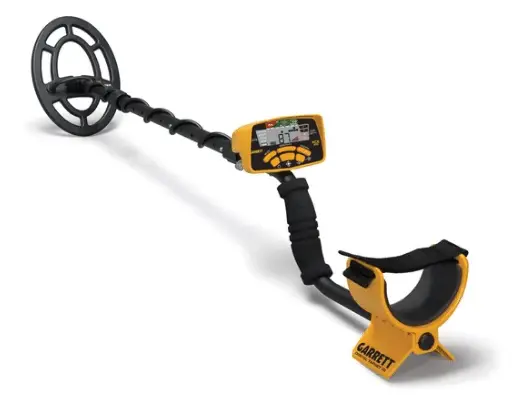For many years, metal detectors have been used for various purposes and processes. The shapes, the styles, and the structures of the various metal detectors out there mean that one can be used for a different purpose to another. And while this can seem quite confusing, it’s easy enough to understand with a little research.
From the frequency to the shape, many factors determine how strong/weak a metal detector can be in any given situation. But what about 3D metal detectors? Are they stronger or weaker than your average choice of metal detector?
3D metal detectors have become a very popular part of the industry today. Despite still being quite new on the scene, they have gained a faithful number of users and followers in the last few years. If you are new to the metal detecting industry, then the introduction of 3D metal detectors can seem quite a daunting new introduction. But is it? It does not have to be!
Today, we’ve been able to move into using 3D metal detectors thanks to rapid technological advancement in the industry. Today, we commonly see these 3D detectors being used for underground treasure as well as precious metals and minerals that might be missed otherwise.
They have become some of the most effective and accurate solutions around when it comes to discovering items buried deeper underground. They are, without a doubt, some of the most exciting innovations to be added to the industry in many, many years.
How Do 3D Metal Detectors Work?
Using radio or electromagnetic systems mainly, 3D metal detectors are very powerful because they utilize a screen display to show you what is going on. By showing you a 3D graphic on the screen, you can normally get a pretty solid idea about what you have actually come across at this point.
Normally, 3D detectors could be used to find more small-scale treasures at deeper depths than they would normally be able to be found at. This is why many people have started moving on from conventional options to using 3D metal detectors!
They help you to determine a lot more about what you have found, and they have become very popular because they can even tell you a fair amount about what you have found in the first place.
That’s a big reason why many people are using 3D metal detectors. The extra analytical information it provides can prove invaluable when searching!
Where do 3D metal detectors work best?
The thing with 3D metal detectors is that they do tend to work very well indeed in most locations. While some metal detecting solutions tend to work best only in certain terrain, 3D models tend to be much more specific in terms of feedback and performance.
These are tremendous for helping you to work efficiently when it comes to things like sandy soil. Sandy soil can often be quite hard to work with, even with sensitive metal detectors. This helps to give you a way around that, ensuring you can interact with it easier than before.
It also tends to work well in both rocky locations and in muddy patches. Many metal detectors can struggle with both rock and mud, so this helps you to know that you can use a 3D metal detector on commonly challenging surfaces as well. Mineralized ground, too, is also easy to navigate and to scan through with 3D metal detectors.
This is why so many people are turning to the 3D options; they feel like it can simply do a more robust job and make sure you get a simpler, easier process.
What can 3D metal detectors find?

While it does vary quite heavily, the most common 3D metal detectors are going to be able to help you find metals like gold, silver, copper, and stainless steel. They can often point out tungsten, too, so you can find it quite easy to locate many metals and the like. While other kinds of metal detectors tend to be mostly focused on things like smaller metals, with a 3D metal detector you don’t have to worry about that.
If you intend to find just about any metal that is buried under the land, then using a 3D equivalent of a metal detector might make the most sense. That isn’t all, though; many people can actually use a 3D metal detecting device to find precious gemstones.
Regular metal detectors are not equipped to look for things like gemstones. With a 3D detector, though, you could be looking for things like diamonds, sapphire, and peridots with relative ease.
This is a big reason why many people choose to trade in their old classic models and instead go for something a bit more robust. If you want to make sure you can find exactly what you set out to find, be sure to pick up a 3D model!
Should I use a 3D metal detector over a normal metal detector?

While it does very much depend on what you are doing, using 3D metal detectors does make a lot of sense. They tend to give you much more power than you would get with a normal metal detector, but again it would normally come down to the circumstances that you are facing.
Normally, standard metal detectors are designed so that they can be used for lower frequency operations. This means that they tend to be much lower frequency than their 3D counterparts.
This is going to allow for the collection of smaller items – mostly things like coins and other objects that tend to naturally be smaller in size. However, by contrast, 3D metal detectors tend to have very high frequencies indeed – even when you are working with treacherous conditions.
Normally, a 3D detector is much more useful at picking up small quantities of precious metals such as gold. They are also much more useful for discriminating against the discovery of certain materials. So, if you are looking to avoid anything made from iron, 3D metal detectors tend to make it much easier to rule those findings in/out of the searches that you are doing.
What else?

Another important factor when it comes to using a 3D metal detector is that they tend to have quite differing coil sizes. The coil sizes for a 3D detector is typically much smaller than the normal metal detectors out there. This allows for much greater sensitivity to smaller targets, in particular small pieces of precious metal such as gold.
This is why you should be looking to use 3D metal detectors if your main thing is about looking for minuscule discoveries. The smaller the coil that you have on a detector, the smaller the size of the object that it will be able to pick up. So, you could say they tend to offer greater balance, frequency, and depth when compared to their more old-school counterpart.
They also tend to be better at handling more treacherous and less comfortable locations. If you find that the terrain is not playing ball with your normal detector, then trying out one of the 3D metal detectors you have available might lead to more consistent results.
It’s important to keep this in mind, as many people don’t realize the differences between both kinds of metal detectors.
Buying a 3D metal detector
The price
One of the most challenging parts of going ahead to buy 3D metal detectors is the price of the model. Many don’t realize just how expensive something like this is going to be. You will have to factor into account the price – if you are looking to get a big-budget metal detector, then going 3D would definitely make a lot of sense.
The price is something you should not be surprised about, though. Given the work that goes into 3D metal detectors versus normal detectors, you should expect a natural price increase.
The depth
Another factor when buying a 3D metal detector is to look at the depth that it can reach. Just like buying any other metal detector, you want something that can go deep into the ground and find out what it is looking for.
Buried treasures are typically going to be buried away in very specific locations. You will find, though, that 3D models do tend to have a much deeper level of depth that they can go to if you want to make sure that you can get accurate results. So, take this into account when moving forward.
Typically, you will find that the best 3D metal detectors will be able to go multiples further than the normal metal detector. If you are going for something with a 3D setting, it can usually hit something much deeper down than a normal detector.
The main reason is that a normal metal detector tends to have a maximum depth of around 13-14”. However, with a 3D model, you could be getting something in the region of 300” – or more!
If you want to make sure you can go right down to the bottom, consider a 3D metal detector.
Obstacle discovery
When you are having to go underground or towards anything that might result in being near electrical fittings, you need help. Many 3D metal detectors today will come with a system that allows you to spot things like underground works that you might not see with your eyes alone. This will show you where these are located so that you don’t accidentally cut through the power cables and cause yourself or anyone else any damage!
This is very important for making sure you can buy a detector that isn’t going to put you (or anyone else) at risk.
The following video is an example of a 3D metal detector at work.
3D metal detectors: do they have any limits?
While 3D metal detectors are without doubt an improvement in every aspect over their non-3D equivalent, they do have one or two limits. For example, if you use any kind of pacemaker then you should probably avoid using a 3D metal detector.
They have a very strong electromagnetic field, which could impact and interfere with your pacemaker. More research is needed on this, though it’s always better to be safe than sorry.
It can also cause interference with other electronic devices. This might have some issues that could limit your use of another electronic device, though this is always going to be subjective to the device. In terms of performance limits, though, it would be a very good metal detector indeed that could improve upon a 3D metal detector!
These are, at the time of writing, the best metal detectors that you are likely to find on the market today. And while they might have some limits, they are going to offer far more opportunity than you would get with a traditional metal detecting solution.
Legal challenges using 3D metal detectors
One thing that you might be wary of when using something like this is the legality of the issue. Many 3D hardware devices can come with legal limits that can put immense limits on how much/little you can use the device. However, that simply is not going to be the case when using a 3D metal detector.
With this, we can find no changes in how you would use a 3D metal detector versus how you would use a normal detector. You might need a permit just as you would for any other metal detecting experience. So long as you have the permit (if you need one), though, you should be more than able to take part in the experience.
It’s important to always read into the geographical constraints based on where you live. Many people will just assume they can go metal detecting, but some countries – especially the United States – have various state-wide limits to consider.
Before going metal detecting in any part of the world, always be sure to read into the rules and regulations which surround such a situation.
So, with this in mind, your main challenge is probably going to come from picking from the many tremendous 3D detectors out there to pick from. What do you think you would like most?
Thanks for reading and if you have any questions, comments or have experience with 3D metal detectors I would like to hear about it in the comments below. And until next time Happy Treasure Hunting!
